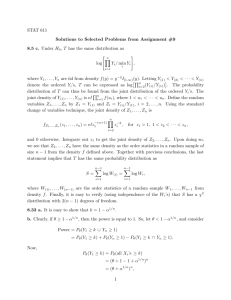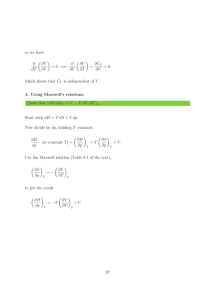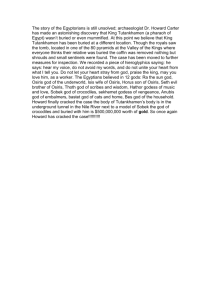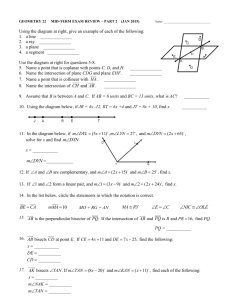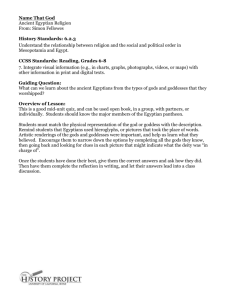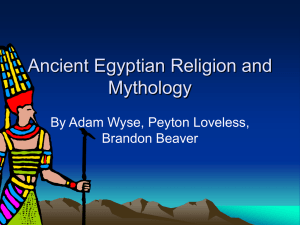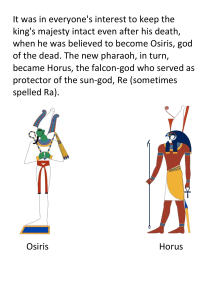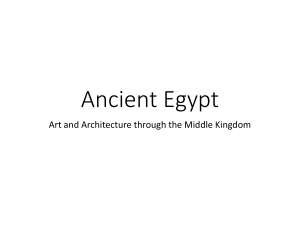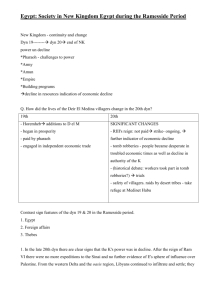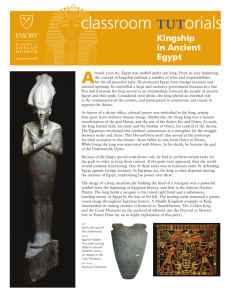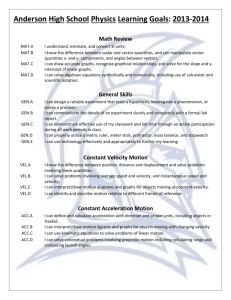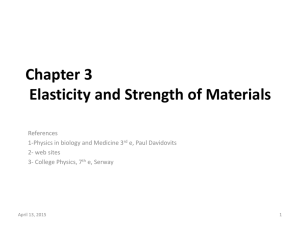Egyptian order:Divinity and Hierarchy
advertisement
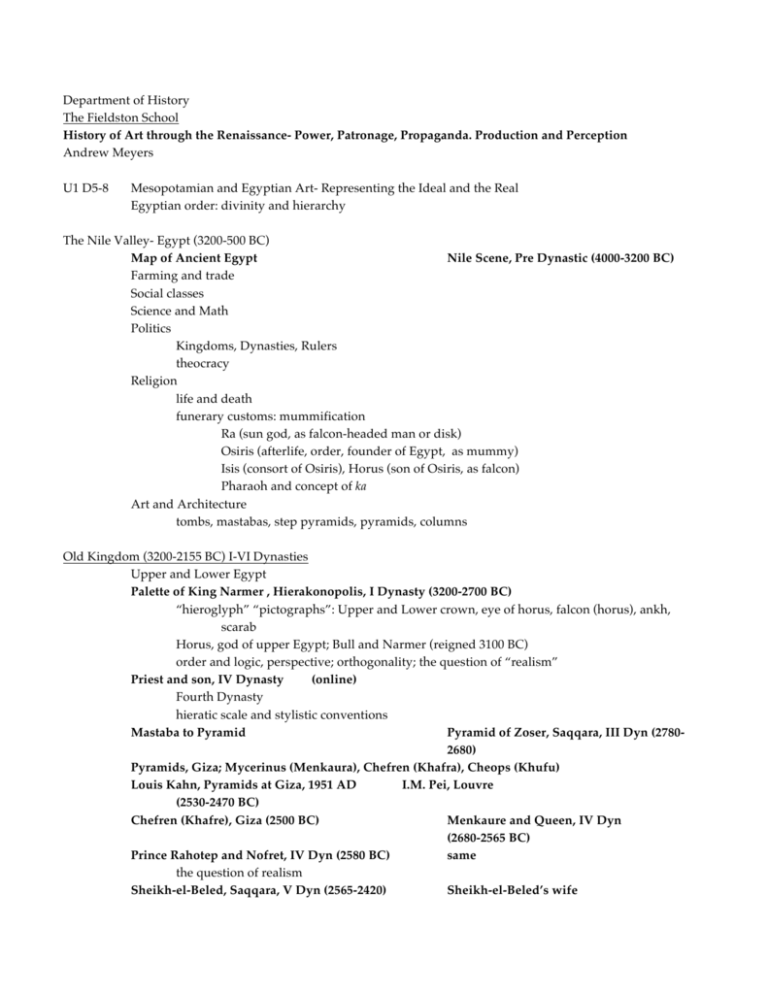
Department of History The Fieldston School History of Art through the Renaissance- Power, Patronage, Propaganda. Production and Perception Andrew Meyers U1 D5-8 Mesopotamian and Egyptian Art- Representing the Ideal and the Real Egyptian order: divinity and hierarchy The Nile Valley- Egypt (3200-500 BC) Map of Ancient Egypt Nile Scene, Pre Dynastic (4000-3200 BC) Farming and trade Social classes Science and Math Politics Kingdoms, Dynasties, Rulers theocracy Religion life and death funerary customs: mummification Ra (sun god, as falcon-headed man or disk) Osiris (afterlife, order, founder of Egypt, as mummy) Isis (consort of Osiris), Horus (son of Osiris, as falcon) Pharaoh and concept of ka Art and Architecture tombs, mastabas, step pyramids, pyramids, columns Old Kingdom (3200-2155 BC) I-VI Dynasties Upper and Lower Egypt Palette of King Narmer , Hierakonopolis, I Dynasty (3200-2700 BC) “hieroglyph” “pictographs”: Upper and Lower crown, eye of horus, falcon (horus), ankh, scarab Horus, god of upper Egypt; Bull and Narmer (reigned 3100 BC) order and logic, perspective; orthogonality; the question of “realism” Priest and son, IV Dynasty (online) Fourth Dynasty hieratic scale and stylistic conventions Mastaba to Pyramid Pyramid of Zoser, Saqqara, III Dyn (27802680) Pyramids, Giza; Mycerinus (Menkaura), Chefren (Khafra), Cheops (Khufu) Louis Kahn, Pyramids at Giza, 1951 AD I.M. Pei, Louvre (2530-2470 BC) Chefren (Khafre), Giza (2500 BC) Menkaure and Queen, IV Dyn (2680-2565 BC) Prince Rahotep and Nofret, IV Dyn (2580 BC) same the question of realism Sheikh-el-Beled, Saqqara, V Dyn (2565-2420) Sheikh-el-Beled’s wife Scribe, Saqqara, V Dyn (2565-2420) interregna Middle Kingdom (2134-1785 BC) XI and XII Dynasties Senousret I, XII Dynasty Standing figure, 1st interregna (2258-2052) Head of Sesostris II , XII Dyn (1874-1855 BC) split into North and South confusion and loosening of artistic conventions perfection of mummification New Kingdom (1500-1162) XVIII-XX Dynasties Amun and Ra move to Thebes Queen Hatshepsut: Osiris Pillar, Temple of Q. Hatshepsut (1500 BC) Osiris Gender Plan of Temple H. as Sphynx Aten and Akenaten move to Amarna “Akhenaten style” Akhenaten and Sun Disk, Amarna (1372-50) Tutankhamen Tutankhamen funeral mask (1340 BC) Throne, detail of T. and wife sarcophagus smallest coffin mummy case vestiges of aten worship Temple of Amon at Karnak, 1320-1200 BC return to Thebes Air view Entrance to Great Temple, sphinxes Hypostyle hall Late Period (1085-332 BC) and Ptolomaic Period (330-30 BC) cultural diffusion God Amun (1085-332) Mummy panel (150 AD) Fayum, Encaustic and wood Temple of Hatshepsut, XVIII Dyn. View Hatshepsut standing Queen Nofretete (1360 BC) Tutankhamen crowned by Amun treasure room second coffin casket for entrails hunting scene on chest Plan, xix Dyn (1314-1197) protodoric columns and closed papyrus capitals types of columns High Priest Ankh, XXV Dyn (730-663)
